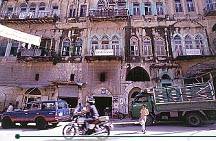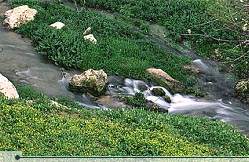Near Amman
 Salt
Salt
The architecture of Salt. © Zohrab
Due to its history as an Ottoman center of government, Salt is filled with wonderful Ottoman architecture in the classical style. Immediately recognizable are the Ottoman houses with their long-arched windows. An array of tall Ottoman minarets towers over the village, along with church steeples, as Salt is also known for its Christian community. A morning or evening spent strolling through the picturesque streets of this charming hill village is time well spent.Salt is also the final resting place of the Prophet Ayyoub (Job), whose legendary patience and faith gave him strength to endure tremendous hardships and ultimately be rewarded with blessings (Job 1-3, Quran 38: 41-44). Another prophet—Shuayb (Jethro), the Midianite father-in-law of Prophet Musa (Moses)—is said to be buried in a tomb near Salt in Wadi Shuayb.
Salt is about thirty kilometers northwest of Amman. Just before you enter the main part of the city (from Amman), you will see the Department of Antiquities Museum and the Tourist Office on the left. The museum houses an assortment of pottery and coins dating from the Chalcolithic period (4500 BCE) through the Mamluk period (1516 CE), as well as Byzantine mosaic panels and early photographs of Salt. The museum is open 08:00-14:00 every day except Friday. Entrance is free. Just off the main street is the Salt Cultural Center. This complex, which opened in 1989, houses another museum, a library, a handicraft school and Salt’s main hall. The handicraft school teaches ceramics, weaving, silk screen printing and dyeing to students, who then sell their craftwork, making the project self-financing. The project is sponsored by the Noor al-Hussein Foundation and the Salt Development Foundation.

 Wadi Seer
Wadi Seer
Wadi Seer. © Zohrab
The estate was originally surrounded by a wall and included a lake and a park with trees and shrubs. The castle itself is unique, in that it was built from some of the largest blocks of any building in the Middle East. The largest block measures seven by three meters, but as most were only about 40 centimeters wide, the whole construction was quite flimsy. An earthquake in 362 CE completely flattened the palace.
The ruins of Qasr al-Abd have been partially restored, thanks to the efforts of a French archeologist who spent three years making detailed drawings of the fallen stones. After having made cardboard cutouts of each stone and piecing the "jigsaw puzzle" together, he then spent another seven years on the actual reconstruction. The result is a fine monument which has, so far, remained mostly undiscovered by tourists.
As you return up the valley, stop around 500 meters from the Qasr. On the left you will find a group of caves cut from the rock. These are known as ‘Iraq al-Amir. The caves, eleven in total, are arranged in two tiers and are thought to be man-made. They were once used as cavalry stables, while the villagers today use them to house their goats and store chaff. At the front of one of the caves, easily recognizable by its carved doorway, the word "Tobiad" is engraved in Aramaic. This gives credence to the theory that Qasr al-Abd was built by the Tobiad family.

